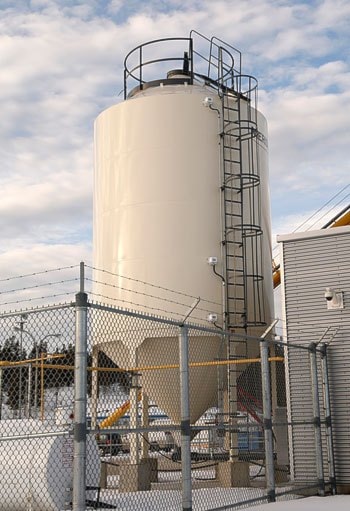The Yukon government has released a plan it hopes will help create more of a biomass industry in the territory.
Biomass energy is basically heat or power created by burning organic material. In the Yukon that means wood heat.
Nearly $60 million a year is spent in Yukon on fuel and electricity to generate heat. About 75 per cent of that is spent on imported fossil fuels, according to the government’s biomass strategy released last week.
“And if we can convert some of that through a biomass strategy and see some of that money stay in this territory, I think that that would be very favourable,” said Premier Darrell Pasloski yesterday.
Approximately 13,000 cords of wood are harvested annually in Yukon, mostly from beetle-kill wood in the Haines Junction area, to heat homes and buildings, the report says. That’s about 17 per cent of Yukon’s total consumption of energy for heat.
Right now the focus is on improving the market for biomass in the territory, said Shane Andre, director of Yukon’s energy branch.
“You can’t have much of a production industry unless you have somewhere to sell it to,” he said.
“So that’s going to be the focus for the next little while, how do we create a market?”
The Yukon Department of Highways and Public Works has agreed to consider using biomass whenever it plans a new building or a retrofit of an old one, Andre said.
On top of that, there are two pilot projects on the way that are going to involve using biomass, he said. But both projects are still in early stages, so Andre wouldn’t provide any details.
Right now, the Yukon has two pieces of public infrastructure that use biomass. The Whitehorse Correctional Centre has been running its furnace on wood pellets, shipped in from Outside, since it opened its doors in 2012.
The Dawson City wastewater treatment facility uses a biomass fuel boiler for generating heat using locally produced wood chips.
Both of those facilities contributed to increasing the amount of renewable energy in the territory by 20 per cent since 2009, Andre said.
The government’s original plan was to hit that target by 2020.
In 2009 about 1,700 terajoules of renewable energy were generated in the Yukon each year. Cord wood and wood pellets used for heating made up about approximately 400 TJ of that total.
Now the territory generates about 2,000 TJ.
Most of that increase happened in 2011 and 2012 through hydroelectric generation, Andre said.
That’s thanks to the Mayo B hydro facility and the addition of a third hydro turbine at the Aishihik hydro facility.
Aside from hydro power, more than 600 people have used the Good Energy rebate program, which offers cash back to residents who buy clean-burning wood and pellet-heating appliances or solar-water heaters for their homes.
Andre estimates 53 kilowatts of new solar generation have been installed off-grid since 2009.
That includes a solar electric system at Northwestel’s Engineer Creek telecommunications site installed in 2013.
Since then, Northwestel has installed three more solar power systems, he said.
Andre said the government will be looking to other jurisdictions to see how the biomass industry here can grow.
In the Northwest Territories, he said, there is significant biomass heat generation and there don’t seem to be air quality concerns.
“It seems at this point, that they don’t have significantly different regulations than we have currently,” he said.
“But what they do have is a very modern industry. They’ve imported a lot of European technologies and boilers that are very efficient and have low emissions.”
Andre said a common misconception is that a healthy biomass industry in the Yukon means local forests will have to suffer.
“Just five per cent of what naturally burns every year could heat every building in the territory, and certainly the biomass industry we’re envisioning wouldn’t heat every building, but you get a sense of where we’re at,” he said.
“Maybe one per cent of the annual forest fire kill would be a very healthy biomass industry.”
Contact Ashley Joannou at
ashleyj@yukon-news.com
